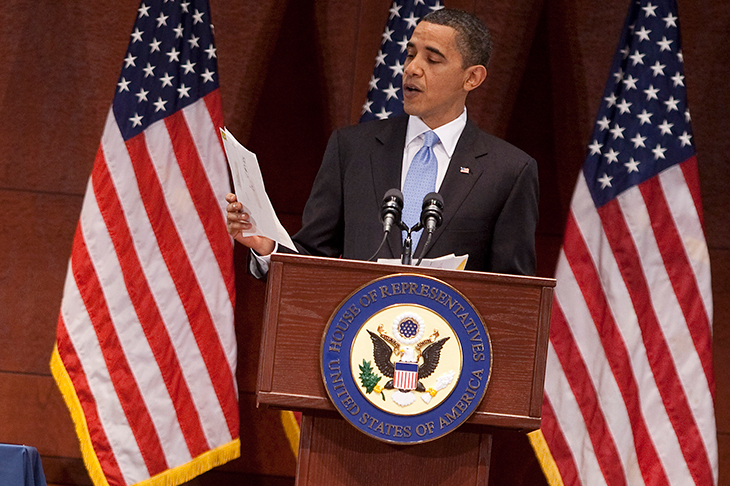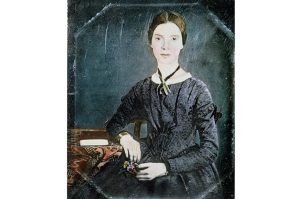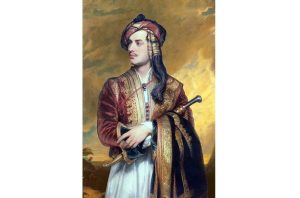President George Washington received about five letters a day and answered them all himself. By the end of the 19th century President William McKinley was so overwhelmed by the volume of mail — 100 letters a day — that he hired someone to manage the flow. Thus began what is now called the Office of Presidential Correspondence (OPC). According to Jeanne Marie Laskas, however, it wasn’t until Barack Obama that a president committed himself to reading a set number of letters a day — the ten LADs, as they became known — from ordinary Americans.
Before delving into Obama’s old mailbags Laskas talks to one of his senior advisers, Shailagh Murray. It is October 2016, a month before the presidential election, and while waiting for Hillary Clinton’s inevitable victory Murray muses on the LADs. ‘They became a kind of life force in this place,’ she says. ‘It’s this dialogue he’s been having with the country that people aren’t even aware of. Collectively, you get this kind of American tableau.’
Laskas reprints dozens of the LADs, and some of the president’s replies. A 2009 letter from Natoma Canfield, a cancer survivor from Ohio, is a riot of exclamation marks: ‘I need your health reform bill to help me!!! I simply can no longer afford to pay for my health care costs!!’ Obama had it framed and hung in the corridor between his private study and the Oval Office. ‘These,’ says Murray, ‘are the voices in the president’s head.’ The 2014 State of the Union address was inspired by a letter from the unimprovably named Misty DeMars, who had been laid off because of budget cuts just after buying a house on a big mortgage.
Shriek marks notwithstanding, many of the letters feel like relics from another era, a time before Twitter insults became the lingua franca of everyday political discourse. They are, Laskas writes, ‘like mothballs, and good posture, and proper table manners, and no swearing’. Who are these courteous correspondents? Although Laskas interviews a few, she soon finds herself more interested in the people on the receiving end, the readers sifting through thousands of letters and emails to choose the ten LADs that will go to the Oval Office. These mailroom staff call themselves ‘Team little people’.
Like them, Laskas has a high tolerance level for the saccharine and cornball. She adores the president’s reply to a kid from Chicago who sent in his homework: ‘Kenny — Nice job on the homework. I caught only two words misspelled on the vocabulary list. Dream big dreams. Barack Obama.’ And she loves it when Obama tells her that the LADs were ‘a little portal’ through which he could be reminded that ‘the American people are full of goodness and wisdom, and you just have to be paying attention’.
But alas! After 300 pages of raindrops on roses and whiskers on kittens, with the author and her interviewees marvelling at everyone’s sheer loveliness, the American people in their wisdom and goodness choose a furious orange warthog as their next president. It is raining when Laskas arrives at the White House on the morning after the election and encounters a guy who has the job of composing a standard reply to the distraught emails that are pouring in. ‘It feels like a rebuke of the connection we’re trying to make between the president and the people,’ he sighs. ‘And I don’t understand it, because he’s read more mail than any president in history.’
That isn’t the only shock. All this time Laskas has led us to believe that her beloved Barack answered the LADs himself. In a distant White House cubby-hole, however, she belatedly discovers Kolbie Blume, a 23-year-old who wrote most of his replies. Having taught herself to mimic Obama’s inflections by listening to his speeches, Kolbie could instantly ventriloquise a perfectly pitched ‘personal response’ whenever Obama scribbled REPLY.
For Laskas, this is almost as traumatic as Trump’s victory. She thinks of the heartfelt replies from Obama that she quoted earlier with such admiration. ‘I suppose Kolbie was the one who actually wrote them.’ How can she keep her faith? Easy: ‘I didn’t ask Kolbie about any of those letters specifically. This was inching way too deep into Santa Claus territory.’
Luckily, whenever Laskas’s po-faced pieties become insufferable there is usually a LAD nearby that provides some light relief. My favourite is from a girl who signs herself Madison Sky Drago:
I am 13. I am American and I would like to peirce [sic] my nose to express myself. My parents disagree with my situation but I feel as I am my own person, I am American and I want to peirce my face. It is my face to show and it represents me and I feel as nobody should have a say against it. What happened to the land of the free?
How pleasing to learn that the land of the free is now also the land of Adrian Mole.
This article was originally published in The Spectator magazine.


















